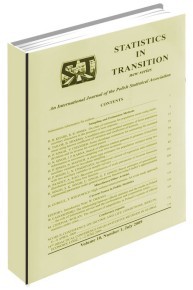BAYESIAN MODEL AVERAGING AND JOINTNESS MEASURES: THEORETICAL FRAMEWORK AND APPLICATION TO THE GRAVITY MODEL OF TRADE
BAYESIAN MODEL AVERAGING AND JOINTNESS MEASURES: THEORETICAL FRAMEWORK AND APPLICATION TO THE GRAVITY MODEL OF TRADE
Author(s): Krzysztof BeckSubject(s): Economy, National Economy, Micro-Economics, Public Finances, Socio-Economic Research
Published by: Główny Urząd Statystyczny
Keywords: Bayesian model averaging; jointness measures; multi-model inference; gravity model of trade
Summary/Abstract: The following study presents the idea of Bayesian model averaging (BMA), as well as the benefits coming from combining the knowledge obtained on the basis of analysis of different models. The BMA structure is described together with its most important statistics, g prior parameter proposals, prior model size distributions, and also the jointness measures proposed by Ley and Steel (2007), as well as Doppelhofer and Weeks (2009). The application of BMA is illustrated with the gravity model of trade, where determinants of trade are chosen from the list of nine different variables. The employment of BMA enabled the identification of four robust determinants: geographical distance, real GDP product, population product and real GDP per capita distance. At the same time applications of jointness measures reveal some rather surprising relationships between the variables, as well as demonstrate the superiority of Ley and Steel’s measure over the one introduced by Dopplehofer and Weeks.
Journal: Statistics in Transition. New Series
- Issue Year: 18/2017
- Issue No: 3
- Page Range: 393-412
- Page Count: 20
- Language: English

